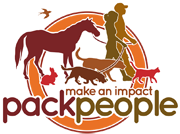 Over 1.21 billion people (2011) -this number belongs to India’s population. The second most populous country in the world. 200 million cows call India there home. India is home to more cattle than any other country. In all but two states in India, cow slaughtering is strictly prohibited by law. Bulls, bullocks and she-buffalo are protected for up to 15 years of their life. Protected and loved by the majority, the sacred cows give 125 million tons of milk annually. India is the largest global producer of milk. But cows are not the only things that are sacred. Monkeys are also revered and not killed because of their association with the Hindu god Hanuman.
Over 1.21 billion people (2011) -this number belongs to India’s population. The second most populous country in the world. 200 million cows call India there home. India is home to more cattle than any other country. In all but two states in India, cow slaughtering is strictly prohibited by law. Bulls, bullocks and she-buffalo are protected for up to 15 years of their life. Protected and loved by the majority, the sacred cows give 125 million tons of milk annually. India is the largest global producer of milk. But cows are not the only things that are sacred. Monkeys are also revered and not killed because of their association with the Hindu god Hanuman.
How do I get to India and cows? Our friend, who is married to a half German half Indian woman, visited this weekend and we talked about animal welfare, animals in India and why I became vegetarian. I stopped eating meat after reading the book, Eating Animals by Jonathan Safran Foer, a gift from my mother in law while she was visiting in the U.S. I passed the book to my friend.
Back to the cows; what happens to the cows when they get old and sick, how do they survive and what happens to the milk? I found a great article written in 2009 by Jeffrey Hays, a fantastic source http://factsanddetails.com. If you think cows just live in India until they get old and die from a natural death, you are not quite getting the whole story.
(Article by Jeffrey Hays) Many of the cows found wandering the streets are dairy cows who have gone dry and been released. Cattle left to wander are supposed to be left to die naturally, with their meat consumed by dogs and vultures, and the skins licensed by Untouchable leatherworkers. But that is not always what happens. To keep traffic flowing cows have been banished from the streets of Bombay and quietly picked up in New Delhi and taken to sites outside the city.
It is estimated that about 20 million cattle die every year. Not all die natural deaths. Large numbers of cattle are disposed off every year as evidenced by India’s huge leather craft industry. Some cities have measures allowing the slaughter of obstructive cattle. Many are picked up by truck drivers who take them to illegal slaughter houses where they are killed —the favored method is slitting their jugular veins. Often the slaughterers start skinning the animals before they are dead. Of the nine cow shelters that have been set up only three were really functioning in 2000. As of 2000, about 70 percent of the 50,000 or so cattle brought the shelter had died.

Unwanted cows are gotten ride in numerous ways that apparently do not conflict with taboo against slaughtering cattle: young ones have a triangular yokes placed around their necks which caused them to jab their mothers udder and get kicked to death. Older ones are simply tied to a rope a left to starve. Some cows are also quietly sold to middlemen who take them to Christian or Muslim slaughterhouses.
Most of the cow slaughtering in India is done in Kerala and West Bengal. There is huge trafficking network for from cattle other states taken to Kerala and West Bengal. An official with the Ministry of Social Justice and Empowerment, told the Independent. “The ones going to West Bengal go by truck and train and they go by the millions. The law say you cannot not transport more than four per truck but they are putting in up to 70. When they go by train, each wagon is supposed to hold 80 to 100, but the cram up to 900. I’ve seem 900 cows coming of the wagon of a train, and 400 to 500 of them came out dead.” [Source: Peter Popham, Independent, February 20, 2000]
The official said the trade exists through corruption. “An illegal organization called the Howrah Cattle associate fakes permits saying the cattle of meant for agricultural purposes, for plowing fields, or for milk. The stationmaster at the point of embarkation gets 8,000 rupees per train-load for certifying the cows are healthy and being used for milk. The government vets get X amount for certifying them as healthy. The cattle are unloaded just before Calcutta, at Howrah, then beaten and taken across to Bangladesh.”
If you want to read more facts, please click here. This is another article about India’s sacred cows published by The Independent (UK). Another good article seen on Compassion over Killing.
I am human, if you see a typo, please let me know at yurda@packpeople.com. If you have a story idea that you would like to share, please drop me an email. Thank you!

